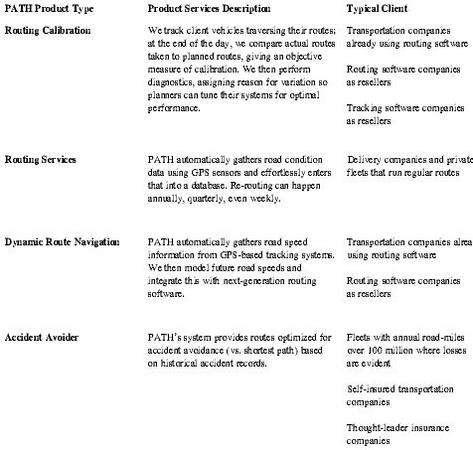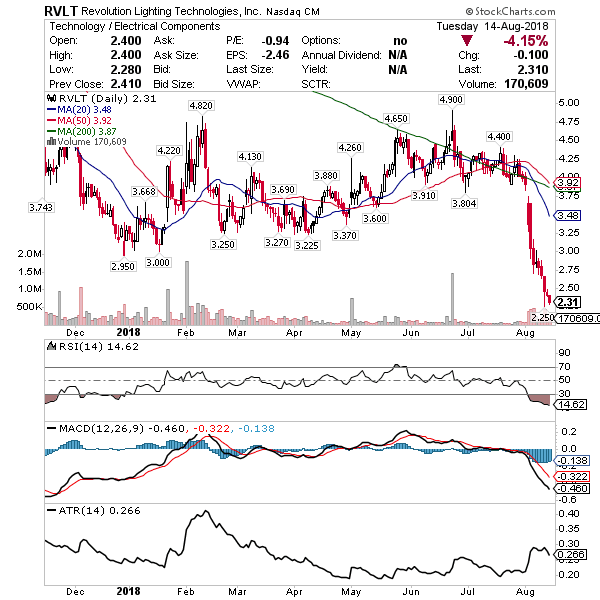Contents:


Concentric Merger – An example of a concentric merger is the merger of Heinz and Kraft, which took place in 2015, and is considered to be the largest merger of this kind in history. Economies Of ScaleEconomies of scale are the cost advantage a business achieves due to large-scale production and higher efficiency. Learn how DealRoom can help improve your collaboration, minimize diligence, and skyrocket positive deal outcomes, whether you’re in the midst of M&A, fundraising, or other types of dealmaking process. The probability of a negative reaction to a merger or acquisition, resulting in a drop in the stock price of the company.
While conglomerate mergers have not had a massive comeback since the 1960s and 1970s, we do still see larger companies with resources diversifying by dipping into new markets through M&A activity. We, at DealRoom, are specialised in mergers and acquisitions of all kind and in this blog, we go over the basics of conglomerate mergers as well as some famous examples and best practices. The merger also allows the firm to access a new pool of customers, thereby expanding its customer base.
Ginkgo Bioworks Provides Compensation Information Related to … – PR Newswire
Ginkgo Bioworks Provides Compensation Information Related to ….
Posted: Fri, 02 Dec 2022 08:00:00 GMT [source]
While there are many reasons why companies engage in mergers, common factors include the potential growth of the business, product diversification, and cost-effectiveness. Concentric mergers and acquisitions occur when two companies operate in the same industry and have similar customer bases but offer different types of products and services. Depending upon the vision and purpose, a company generally decides to either get merged or acquired chosen by theboard of directors. Merger and acquisition though it sounds simple and easy, can take a long time to happen as it involves a lot of formalities and due procedures.
This results in consumers paying unfair prices due to one company controlling all of production. A concentric merger is also known as a congeneric or product extension merger. This type of M&A occurs when two or more companies operating in the same market or sector with overlapping factors merge .
What Is a Congeneric Merger?
A merger is when two or more companies—usually similar in power or size—voluntarily combine their assets to create a new company or legal entity. It is possible that both can gain from a larger consolidated balance sheet and the greater benefits that brings. A market extension acquisition is a variation of a horizontal acquisition, whereby the companies in question are in different geographic locations. A circular merger is a transaction to combine companies that operate within the same general market, but offer a different product mix. A merger is an agreement that unites two existing companies into one new company.
Horizontal mergers are done to increase market power , further utilize economies of scale, and exploit merger synergies. This congeneric merger took place in 2002, with Broadcom being the company that acquired Mobilink Telecom. The name Broadcom was kept, allowing them to improve their current brand name with new technology. The companies provided slightly different products, but since both had to do with the electronic industry, they were able to combine technologies and competencies. Usually, these companies have similar production processes and business markets. Finally, this kind of merger helps the company reduce the risk of doing business by diversifying the product line.
NAMUH and Ginkgo Bioworks Announce Partnership to Produce … – PR Newswire
NAMUH and Ginkgo Bioworks Announce Partnership to Produce ….
Posted: Wed, 18 Jan 2023 08:00:00 GMT [source]
A mixed conglomerate merger involves companies that are looking to expand product lines or target markets. A vertical acquisition occurs when a company focusing on any one of these areas acquires another with a focus on one of the others. It also means the companies operate in the same industry and are in the same or similar production stage.
What is a Concentric Merger?
A congeneric merger is a type of merger where two companies are in the same or related industries or markets but do not offer the same products. In a congeneric merger, the companies may share similar distribution channels, providing synergies for the merger. The acquiring company and the target company may have overlapping technology or production systems, making for easy integration of the two entities. The acquirer may see the target as an opportunity to expand their product line or gain new market share.
GE is a great example, according to Point Park University, because they work in tons of different areas from aviation to healthcare to household products to various gizmos. GE seemingly does it all and they were able to pull that off by acquiring other companies that specialized in these fields. So, though a merger seems like a troubling move for companies on paper, it’s actually a solid business move that both companies will – if done correctly – benefit from. “A merger is an agreement that unites two existing companies into one new company,” reports Investopedia. When a company is deciding on an M&A strategy, the type of acquisition it is looking to make will often determine the strategy even before a long list of potential targets is developed. At the time of the merger, the company was the third-largest food and beverage company in North America and the fifth-largest globally.
In these industries, the typically high levels of consolidation that exist incentivize new companies entering the market to undertake acquisitions rather than starting greenfield operations in the new geography. In this article, DealRoom draws on its extensive industry insights to shed some light on some of the different types of merger and acquisitions that exist. A congeneric merger can be a great way for two separate companies to reach success together in the future. When you go through a congeneric merger, you can’t just expect to buy a company and put everything together, hoping it would work. In most cases, mergers occur when a weaker company is acquired by a stronger company. Value ChainValue chain refers to the sequence of activities and processes a business undertakes to add value to its product or service at every stage from its inception to delivery.
In an acquisition, a larger organization buys a smaller business entity for expansion. Horizontal MergerHorizontal mergers take place when two companies in the same industry merge. Typically, industry competitors seek such mergers for a variety of reasons, including increasing market share, achieving economies of scale, lowering competition, and so on. If the two businesses are in the same industry, pooling their resources could result in a higher market share.
The Concentric Merger
A product extension merger is a kind of congeneric merger where the product line of one company is added to the product line of the other. This allows the merged company to benefit from access to a larger customer base, which could then translate to bigger market share and profits. In contrast to a congeneric merger, where the target and the acquirer are in similar industries, a conglomerate merger occurs between companies that are in no way related. Often, the two companies involved engage in completely different industries with very little overlap in the way they operate their businesses.
Concentric mergers are one of the more popular types of mergers and acquisitions. M&A is a common expansion strategy used by businesses to quickly expand their size, service area, talent pool, client base, and resources. However, because the procedure is pricey, firms must be certain that the benefit achieved is significant. An acquisition, on the other hand, occurs when a larger organization purchases a smaller company and absorbs its operations.

A horizontal merger is a merger or business consolidation that occurs between firms that operate in the same industry, usually as larger companies attempt to create more efficient economies of scale. While both companies were in the financial services industry, they had different product lines. Travelers, on the other hand, was known for its insurance and brokerage services.
examples of synergy in business that take your business from organic growth to exponential growth
A conglomerate merger is a merger between firms that are involved in totally unrelated business activities. These mergers typically occur between firms within different industries or firms located in different geographical locations. Given that there are so many different types of mergers and acquisitions out there, it makes sense that there are laws out there that govern what companies can and cannot do.
Depending on the market strategy that you are using, you can use your current resources and create a new reputation from scratch. In 1998, a merger between two companies from the oil industry also occurred – namely, Exxon and Mobil. The result of this was ExxonMobil, which eventually became one of the world’s largest companies. Investopedia requires writers to use primary sources to support their work. These include white papers, government data, original reporting, and interviews with industry experts.
- In simple words, mergers and acquisitions take place when two or more businesses combine into one separate entity.
- The two companies both operate in the electronics industry and the resulting merger allowed the companies to combine technologies.
- “The companies involved in a congeneric merger are typically engaged in complementary, not directly competitive activities,” explains Natasha Gilani from Bizfluent.
- These include white papers, government data, original reporting, and interviews with industry experts.
This concentric merger example and acquisition occurs when both the target company and the target-seeking company are different in terms of industry, product offering, and production stage. The process of finding a concentric merger opportunity can be complex and time-consuming. Business owners need to identify potential partners that not only have compatible products or services, but also ones that are financially viable and will bring mutual benefits. This is where the expertise of a business broker such as Chelsea Corporate can be pivotal to success. A merger is said to be reverse in nature if it involves the acquisition of a larger firm by a smaller firm.
Both companies should be operating in the same space, providing more or less the same products and services. The increased scale of the new company should give it increased bargaining power and a better competitive position than the two companies previously had when they were on their own. In most industries, the largest players either obtained or maintained their leadership position through horizontal acquisitions. A congeneric merger can allow a target and its acquirer to take advantage of overlapping technology or production processes to expand their product line or increase their market share.
Two or more companies—usually similar in power or size—voluntarily combine their assets to create a new business or legal entity. The terms ‘merger’ and ‘acquisition’ refer to the unification of two or more companies, but they have different processes and outcomes. Learn about modeling different types of mergers in CFI’s M&A Financial Modeling Course. In the most basic terms, an acquisition is simply a transaction wherein one company buys another company.

The biggest risk in a conglomerate merger is the immediate shift in business operations resulting from the merger, as the two companies operate in completely different markets and offer unrelated products/services. The $90 billion all-share merger between mining firm Xstrata and commodities trader Glencore in 2012 provides an interesting example of a product extension merger. Under the deal, the players said that they would create a ‘natural resources group’ that would be able to trade the commodities as soon as they were mined. In this respect, it could also be seen as a vertical merger, in that one was upstream of the value chain of the other.
In a way, these are like arranged marriages between two completely different people. Typically, a congeneric merger happens when one company with an existing product line acquires another company to add to that line. If you are interested in congeneric mergers and what they can do for you, then this article prepared by our DealRoom team should be able to give you the basic information on that. The 2015 merger of Heinz and Kraft valued at around $100 billion, is thought to be the largest concentric merger in history. The deal created Kraft-Heinz, a food industry behemoth whose 2019 revenues were $24.97 billion. The downside to a conglomerate merger can result in loss of efficiency, clashing of cultures, and a shift away from the core businesses.
Inner cusps of the first dark matter haloes: formation and survival in a … – Oxford Academic
Inner cusps of the first dark matter haloes: formation and survival in a ….
Posted: Thu, 01 Dec 2022 08:18:01 GMT [source]
After all, employees will be wondering if their jobs are in jeopardy and HR has a ton of different tasks ahead of them. To help take some of the stress out of the equation, we’re going to go over the four most common types of mergers found in the corporate world. The reverse merger process requires increased due diligence to vet the investors’ motivations, liabilities, and risks.
We also reference original research from other reputable publishers where appropriate. You can learn more about the standards we follow in producing accurate, unbiased content in oureditorial policy. INVESTMENT BANKING RESOURCESLearn the foundation of Investment banking, financial modeling, valuations and more. Here the sales of one product will drive the sales of others as we see people who generally buy laptops will also be requiring a bag to carry it on the move. The company turns out to be a one-stop destination for consumers where the company offers products linked in some way or the other. Average CostAverage cost refers to the per-unit cost of production, calculated by dividing the total production cost by the total number of units produced.